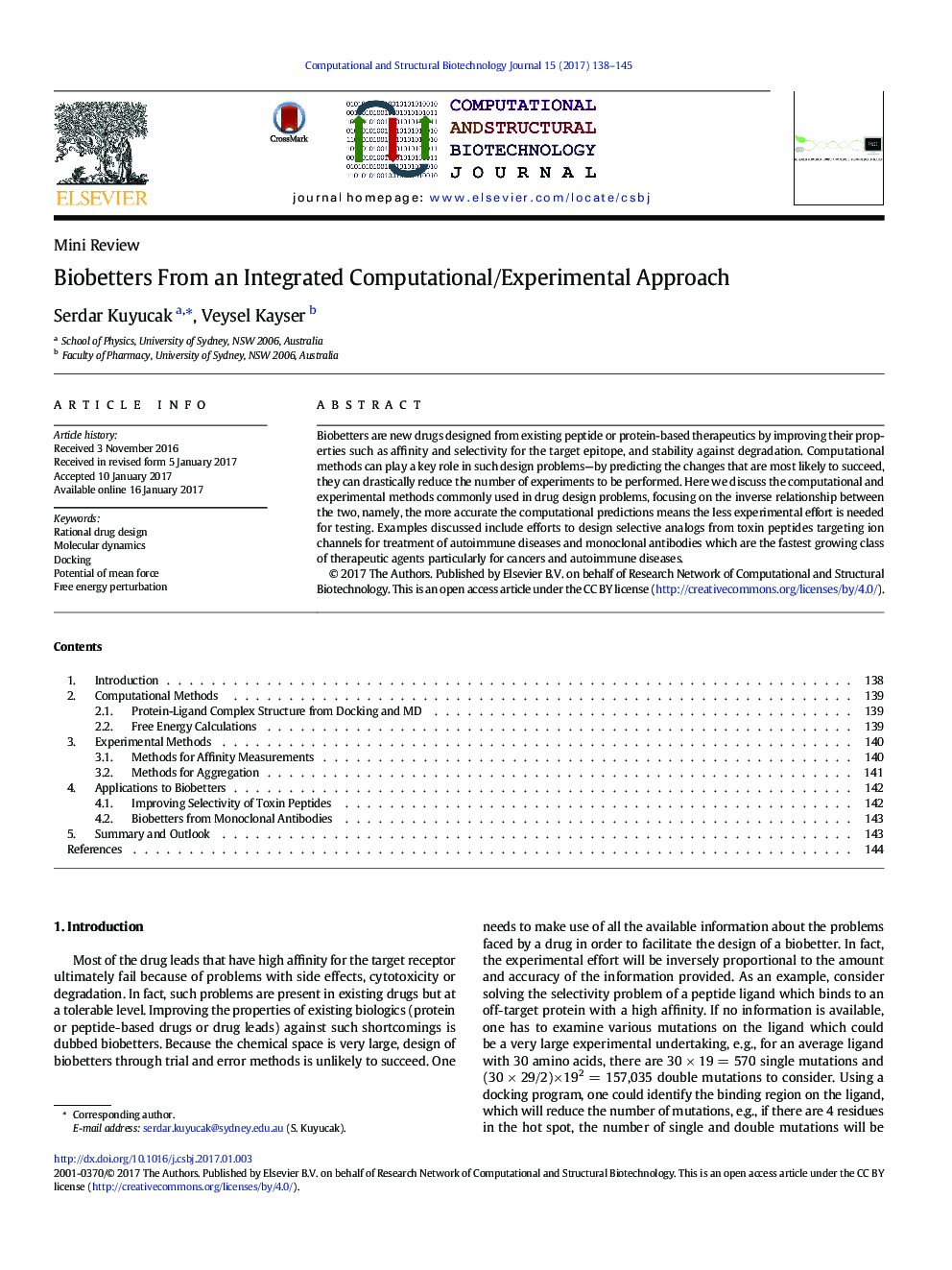| Article ID | Journal | Published Year | Pages | File Type |
|---|---|---|---|---|
| 8408613 | Computational and Structural Biotechnology Journal | 2017 | 8 Pages |
Abstract
Biobetters are new drugs designed from existing peptide or protein-based therapeutics by improving their properties such as affinity and selectivity for the target epitope, and stability against degradation. Computational methods can play a key role in such design problems-by predicting the changes that are most likely to succeed, they can drastically reduce the number of experiments to be performed. Here we discuss the computational and experimental methods commonly used in drug design problems, focusing on the inverse relationship between the two, namely, the more accurate the computational predictions means the less experimental effort is needed for testing. Examples discussed include efforts to design selective analogs from toxin peptides targeting ion channels for treatment of autoimmune diseases and monoclonal antibodies which are the fastest growing class of therapeutic agents particularly for cancers and autoimmune diseases.
Keywords
Related Topics
Life Sciences
Biochemistry, Genetics and Molecular Biology
Biotechnology
Authors
Serdar Kuyucak, Veysel Kayser,
